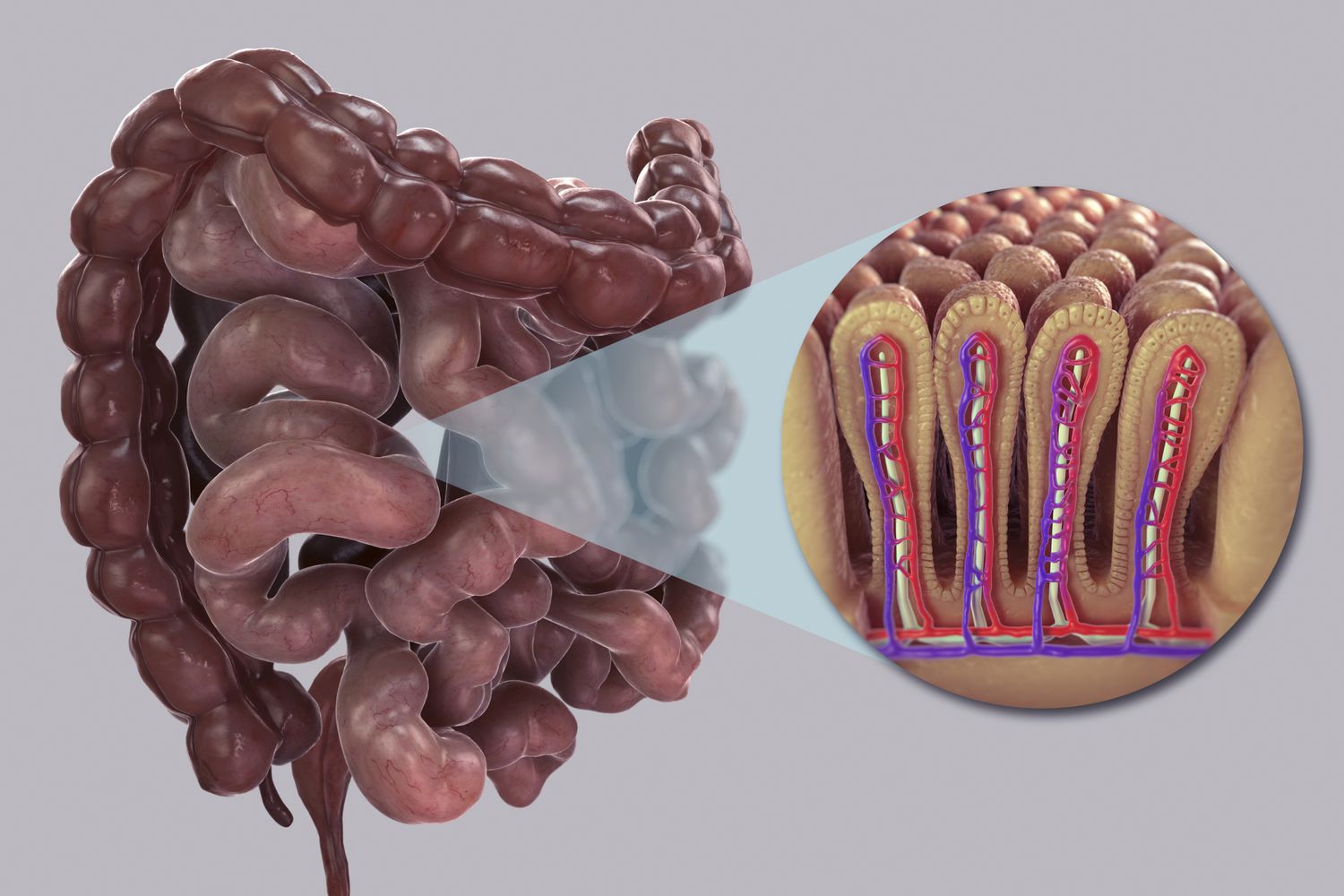
how is the small intestine designed to absorb digested food Embark on a fascinating journey through the anatomy and functionality of the small intestine. Delve into the mechanisms that facilitate the absorption of digested food particles, elucidating the marvels of human physiology.
1. how is the small intestine designed to absorb digested food Unveiling the Architectural Wonders Understanding the structural layout of the small intestine and its role in nutrient absorption.
The small intestine, a convoluted tube spanning over 20 feet in length, is divided into three segments: the duodenum, jejunum, and ileum. Each segment contributes uniquely to the process of nutrient absorption, showcasing a remarkable synergy of structure and function.
Embark on a visual expedition through the intricacies of the small intestine’s architectural design, unraveling the mysteries of its absorptive prowess.
2. Deciphering the Role of Villi and Microvilli Exploring the microscopic structures that amplify the absorptive surface area of the small intestine.
Within the lining of the small intestine, villi and microvilli stand as miniature protrusions, vastly expanding the surface area available for nutrient absorption. These specialized structures play a pivotal role in enhancing the efficiency of nutrient uptake, exemplifying nature’s ingenious design.
Dive into the microscopic realm of villi and microvilli, where every fold holds the key to optimal nutrient absorption.
3. Peristalsis: The Wave of Nutrient Transport Unraveling the rhythmic muscular contractions that propel digested food along the length of the small intestine.
Peristalsis, a coordinated muscular movement, facilitates the onward journey of chyme through the small intestine. This sequential contraction and relaxation of smooth muscles ensure thorough mixing of digestive juices with food particles, enabling efficient nutrient absorption.
Witness the orchestrated dance of peristalsis as it propels nutrients towards their destination within the small intestine.
4. The Duodenum: Gateway to Digestive Elixir Understanding the pivotal role of the duodenum in receiving and processing partially digested food from the stomach.
how is the small intestine designed to absorb digested food Situated at the initial segment of the small intestine, the duodenum acts as a crucial site for the mixing of chyme with digestive enzymes from the pancreas and bile from the liver. This harmonious blend primes nutrients for absorption further downstream, marking the inception of efficient nutrient assimilation.
Explore the significance of the duodenum as the primary hub for digestive alchemy, where nutrients undergo their transformative journey.
5. Spotlight on Nutrient Absorption in the Jejunum Delving into the specialized functions of the jejunum in absorbing essential nutrients, including carbohydrates, proteins, and fats.
As the middle segment of the small intestine, the jejunum boasts an extensive surface area adorned with villi and microvilli, facilitating the absorption of nutrients into the bloodstream. This region serves as a pivotal nexus for the assimilation of vital macronutrients, ensuring their seamless integration into metabolic processes.
Illuminate the jejunum’s role as a bustling marketplace for nutrient exchange, where essential elements find passage into the body’s circulation.
6. The Ileum: Culmination of Absorptive Mastery Unveiling the final frontier of nutrient absorption in the small intestine and its unique contributions to the digestive process.
As the terminal segment of the small intestine, the ileum orchestrates the absorption of bile salts, vitamin B12, and remaining nutrients that have eluded uptake in previous segments. This culminating phase of nutrient absorption marks the denouement of the small intestine’s remarkable journey, ensuring comprehensive assimilation of vital nutrients before onward passage to the large intestine.
Navigate through the concluding chapters of nutrient absorption as the ileum undertakes its pivotal role in harvesting remaining essentials from the digestive milieu.
How is the Small Intestine Designed to Absorb Digested Food?
Unlocking the secrets of the small intestine’s intricate design for optimal nutrient absorption.
FAQs
- What are the primary nutrients absorbed in the small intestine? The small intestine predominantly absorbs carbohydrates, proteins, fats, vitamins, and minerals, facilitating their uptake into the bloodstream for distribution to various tissues and organs.
- How do villi and microvilli contribute to nutrient absorption? Villi and microvilli exponentially increase the absorptive surface area of the small intestine, enhancing the efficiency of nutrient uptake by maximizing contact between digested food particles and absorptive cells.
- What role does peristalsis play in nutrient absorption? Peristalsis facilitates the movement of digested food along the length of the small intestine, ensuring thorough mixing with digestive enzymes and optimal contact with absorptive surfaces, thereby enhancing nutrient absorption.
- Why is the duodenum considered the gateway to nutrient absorption? The duodenum receives partially digested food from the stomach and serves as the primary site for mixing with digestive enzymes and bile, initiating the breakdown and absorption of nutrients essential for metabolic processes.
- How does the jejunum differ from other segments of the small intestine in terms of nutrient absorption? The jejunum boasts an extensive surface area adorned with villi and microvilli, specializing in the absorption of essential macronutrients such as carbohydrates, proteins, and fats, vital for sustaining metabolic functions.
- What makes the ileum crucial for nutrient absorption despite being the last segment of the small intestine? The ileum completes the absorption of remaining nutrients, including bile salts and vitamin B12, ensuring comprehensive assimilation before onward passage to the large intestine for waste elimination.
Conclusion
In conclusion how is the small intestine designed to absorb digested food , the small intestine stands as a testament to nature’s exquisite craftsmanship, showcasing a meticulously designed apparatus for the efficient absorption of digested nutrients. From the architectural wonders of villi and microvilli to the orchestrated symphony of peristalsis, each component plays a pivotal role in ensuring optimal nutrient uptake. By unraveling the mysteries of the small intestine’s design, we gain profound insights into the intricacies of human physiology and the marvels of digestive efficiency.








